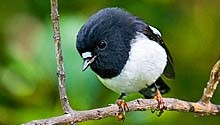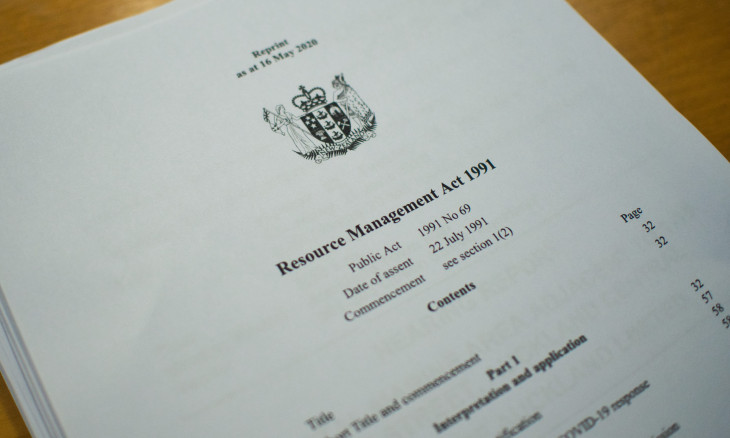
North Island Tomtit, photo Eric Wilson
NOTICE: The Matuku Reserve is currently closed to the public protect our kauri from the spread of kauri dieback. Please respect this ban and visit one of the many other walks around the Auckland Region.
The locals: Matuku (bittern), fernbird, spotless crake, black swan, pukeko, tui, kereru, tomtit, koura, native eels, banded kokopu, giraffe weevils.
Walking tracks: Three walking tracks in the reserve form loops that vary in length from one to three hours. Please note: the tracks are mostly on a slope, with a couple of short steep sections.
Getting there: After Swanson take right fork into Waitakere Road (not up Scenic Drive), up over hill, down past Waitakere village and turn left after passing over railway. Very shortly pass the school on the left, and very soon after take right fork into Wairere Road.
Drive about 5.5 km on Wairere, ignoring side roads until finally turning left into unsealed Jonkers Road. At one kilometre along this road go left into narrow Snows Lane at the Forest & Bird sign. One kilometre down this lane pass viewing platform and entrance, and reach car park 100 metres further on. There is space for 10 cars only here, so groups should consider carpooling. (There is no access to the reserve from Bethells Road.)
Requirements: The reserve is closed to groups of more than 10 during July and August, and at other times such groups must contact the ranger at least a month before their trip. To prevent kauri die-back disease it is essential for all visitors to arrive with clean footwear and to use the boot spray stations provided.
Facilities: 200 metres in from the main entrance is a shelter with information and display, water supply, picnic table with seats, and NZ's funniest dunny.
Situated in the hills behind Bethell’s beach, this forest and wetland sanctuary is Forest & Bird’s second-largest reserve occupying a total of 120 hectares. The larger part of the reserve is native forest which is best described as coastally influenced lowland broadleaf and kanuka forest, with emergent tanekaha and kauri on ridges. Dense with fruiting & flowering species such as puriri, karaka, nikau, rewarewa, kowhai, pigeonwood and mahoe, the forest is a good food source for the thriving tui & kereru populations. Over 260 vascular plant species have been recorded in the forest, including perching lilies and orchids and a luxuriant carpet of ferns & sedges covering the forest floor, as well as 100 other species.
At the base of these slopes is the reserve’s 20-hectare wetland, part of the wider Te Henga Wetland, the largest relatively unmodified freshwater marshland in the Auckland region. A signposted 60-metre boardwalk allows visitors to experience the dense wetland vegetation and perhaps see some of its birdlife such as fernbird, pukeko, black swan, rarely a matuku, and perhaps pateke which have been reintroduced to the wetland.
Having acquired the reserve in 1979, the Waitakere Branch is now seeing how well the forest is responding to years of pest control, with a surge in the number of tomtits, fantails, tui and kereru. Most interesting has been the boom in the insect population, with large invertebrates such as giraffe weevil thriving. Indeed, in recent years several major entomological discoveries have been made in this reserve, making Matuku a rewarding scientific field for entomologists.
For a full description of Matuku Reserve see the PDF belows, by honorary ranger John Staniland:










